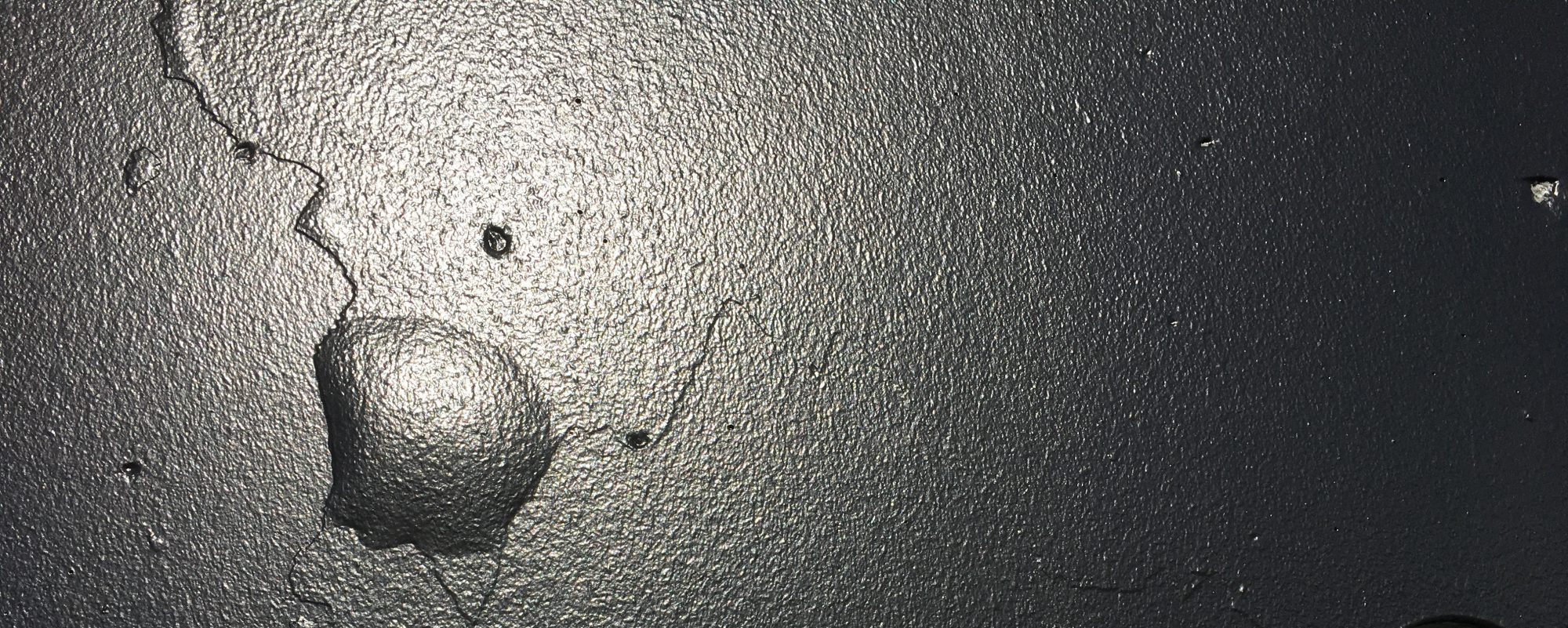Concrete and steel together form the backbone of every bridge, building, and road in a symbiotic relationship. The steel gives the concrete higher durability by increasing tensile strength, and the concrete provides physical and chemical barriers for the steel, protecting it from the elements. With exposure to air and water, the chemical properties of the concrete can be altered over time through the process of carbonation. This can eliminate the chemical barrier for the steel provided by the concrete.
Chemistry of corrosion passivation
Metals generally form a passive oxidation layer on the surface of the metal in a high pH environment. This thin layer acts as a barrier from exterior elements that may promote corrosion. In a typical portland cement system, the high alkalinity of the cement forms a passivating metal oxide layer on the surface of the steel reinforcement, effectively coating and protecting the steel reinforcing from moisture and oxygen-induced corrosion. The passivation layer also provides protection from chloride-induced corrosion to a certain level.
Generally, the corrosion rate of steel increases as the pH of the surrounding concrete decreases. Even at lower pHs this relationship applies. Carbonation of the concrete occurs when carbon dioxide from the air reacts with the calcium hydroxide from the cement paste, in the presence of moisture. Calcium hydroxide is an alkaline material, and when the chemical reaction consumes the calcium hydroxide in the paste, it causes the pH of the concrete to decrease. Moisture is also an important ingredient in the carbonation reaction. Carbonation occurs the best in concrete that has a relative humidity(RH) of 50% to 75%. Below 25% RH and there is not enough water for the reaction to occur, while above 75% RH the pores become filled with moisture which restricts the advancement of carbonation in the paste.

Typical concrete will have a pH in the range 12 to 14. As the concrete carbonates, the pH will slowly decrease to around 9 to 10 for fully carbonated concrete. As long as the pH of the concrete remains above 10 to 11, the passivation layer will still be somewhat intact, and some protection will be provided to the steel reinforcement. As the pH decreases, the protection provided to the steel reinforcement also decreases. When the pH of the concrete reaches below 10, the passivation layer is eliminated and corrosion can occur.
Concrete that has not been carbonated, and the passivation layer is still intact, will provide protection from chloride-induced corrosion of the steel. The threshold for chloride-induced corrosion for non-carbonated concrete is around 0.025% chloride by mass of concrete, depending on the cement content of the concrete. Chloride levels above this concentration will start the process of corrosion even with the passivation layer present. If the concrete is fully carbonated, any amount of chloride present will promote corrosion, and if it is partially carbonated, the chloride threshold to promote corrosion is significantly lower.
For more information contact Matt Anderson at 847.306.9240 or manderson@materialsanalyticalgroup.com. And for 15% off our services, let us know you have been reading our articles before receiving your invoice.
REFERENCES
Portland Cement Association. (n.d.). Corrosion of Embedded Metals. Retrieved from PCA: https://www.cement.org/learn/concrete-technology/durability/corrosion-of-embedded-materials
WHD Microanalysis Consultants LTD. (n.d.). Carbonation of Concrete. Retrieved from Understanding Cement: https://www.understanding-cement.com/carbonation.htm

